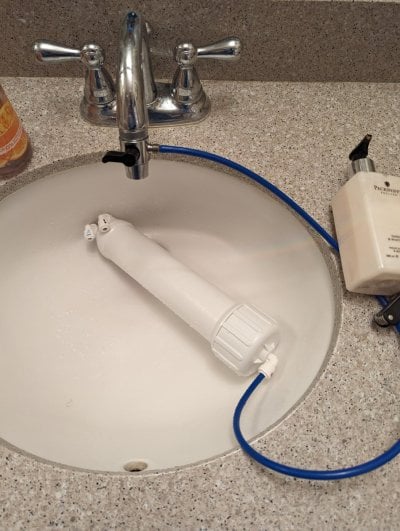So I'm confused about instructions for flushing a new RO membrane (I'm using a BRS 6 stage system). Even BRS suggests running the output just as you normally would (flush valve OFF) and dumping the "clean" output water after a few gallons.
My question is, why isn't using the flush valve sufficient enough (I thought that was the point)? Can I not just hook up the membrane directly to flush as pictured?
Thanks.

My question is, why isn't using the flush valve sufficient enough (I thought that was the point)? Can I not just hook up the membrane directly to flush as pictured?
Thanks.
















